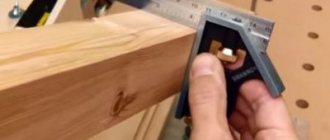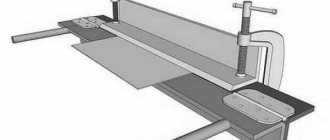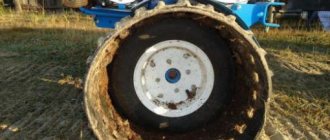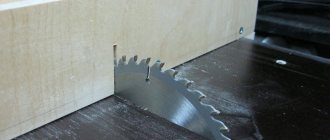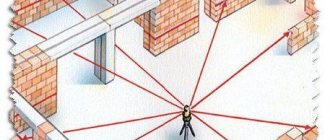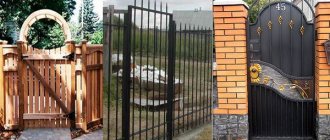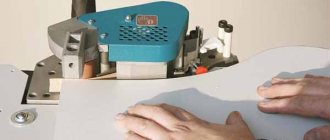Technique for making balusters for stairs from natural wood with your own hands without a machine
Many craftsmen prefer to create high-quality wooden staircase balusters with their own hands without a machine, since this allows them to obtain a unique product. Finished parts made from durable solid wood serve as reliable support for voluminous railings. It is the balusters that perform the main load-bearing function and also serve as a decorative decoration for the staircase. The extraordinary structure of natural material allows you to create unusual blanks that will fit perfectly into the interior of any room.
Forged balusters for stairs
- Dimensions: 850×250 mm
- Material: Kv 12x12 mm
- Dimensions: 850*330mm
- Material: tr.15*15*1.5
- Base: 15x15 mm
- Dimensions: 850*280mm
- Material: tr.15*15*1.5
- Base: 15x15 mm
- Dimensions: 860×240 mm
- Material: Tr 15x15 mm
Dimensions: 860×250 mm
- Height: 900 mm
- Material: Kv 12x12 mm
- Base: 12x12 mm
- Height: 900 mm
- Material: Kv 12x12 mm
- Base: 12x12 mm
- Height: 900 mm
- Material: Kv 12x12 mm
- Base: 12x12 mm
- Height: 900 mm
- Material: Kv 12x12 mm
- Base: 12x12 mm
- Dimensions: 900×125 mm
- Material: Kv 12x12 mm
- Base: 12x12 mm
- Dimensions: 900×125 mm
- Material: Kv 12x12 mm
- Base: 12x12 mm
- Dimensions: 900×65 mm
- Material: Kv 12x12 mm
- Base: 12x12 mm
- Dimensions: 900×65 mm
- Material: Kv 12x12 mm
- Base: 12x12 mm
- Height: 800 mm
- Material: Kv 12x12 mm
- Base: 12x12 mm
- Height: 900 mm
- Material: Kv 12x12 mm
- Base: 12x12 mm
- Height: 900 mm
- Material: Kv 12x12 mm
- Base: 12x12 mm
- Height: 900 mm
- Material: Kv 12x12 mm
- Base: 12x12 mm
- Height: 900 mm
- Material: Kv 12x12 mm
- Height: 900 mm
- Material: Kv 12x12 mm
- Height: 800 mm
- Base: 12x12 mm
- Height: 800 mm
- Base: 12x12 mm
- Height: 900 mm
- Material: Kv 12x12 mm
- Base: 12x12 mm
- Height: 900 mm
- Material: Kv 12x12 mm
- Base: 12x12 mm
- Height: 850 mm
- Material: Kv 12x12 mm
- Height: 1100 mm
- Material: Kv 12x12 mm
- Base: 12x12 mm
- Dimensions: 900×230 mm
- Material: Kv 12x12 mm
- Base: 12x12 mm
- Height: 800 mm
- Material: Kv 12x12 mm
- Base: 12x12 mm
- Height: 1100 mm
- Material: Kv 12x12 mm
- Base: 12x12 mm
- Dimensions: 900×235 mm
- Material: Kv 12x12 mm
- Base: 12x12 mm
- Dimensions: 900×110 mm
- Material: Kv 12x12 mm
- Base: 12x12 mm
You will definitely buy beautiful and unusual forged metal balusters. We are pleased to offer a wide range of these products. Forged balusters are created by experienced craftsmen and are of high quality.
The presented forged elements for stairs, railings, gratings and other structures have gained popularity due to ease of installation, high quality and optimal cost.
It is also important that every detail is distinguished by a design thought out to the smallest detail.
Durable racks for strengthening stairs
Refined balusters made of durable boards look very aesthetically pleasing and give the staircase a more comfortable and aristocratic look. You can build such products yourself, resulting in a truly unique structure. All wooden stands are usually classified by grade. The most expensive products are those that require the most careful selection of texture and shade.
The material must undergo multifaceted finishing. Masters allow for slight tints and minimal differences in texture. Knots should not be more than 7 millimeters in diameter.
In your home workshop, you can create unique balusters from natural materials with partial selection of color and texture. The blanks must be repainted in dark shades. The changes can be dramatic. Beginners can create stands that are not matched by texture. Knots can be light or dark, but their dimensions should be minimal. Some balusters sometimes have fragments of sapwood. Craftsmen allow cracks and knots to be puttied at the manufacturing stage.
The height of the products is easily adjustable. Experienced craftsmen use volumetric point models. First, be sure to prepare a drawing in which the thickness is indicated, as well as the dimensions of each part of the staircase. The result is not a classic drawing, but a multifaceted artistic scheme, which the master will focus on.
An interesting video about the variety of wooden balusters:
Mounting the support post
The methods of fastening and installing the support post are labor-intensive, but it is worth it, since high reliability of the entire structure is achieved. Fastening can be done in two known ways:
- Anchors - a groove of a rather complex shape is cut out at the bottom of the post, into which an anchor is screwed, the diameter of which can be from 5 mm to 16 mm;
- Bayonet nut - to mount it, you will need a special key and washer.
When installing a support column, you must adhere to one rule - the inner wedge of the anchor must be driven in, not twisted. A hole is drilled in the floor into which an anchor is driven with a hammer up to the limiting edge. A supporting baluster is then attached to it.
Features of fastening balusters made of other materials
Functional purpose and positive characteristics
Durable wooden deck balusters perform several important functions. That is why these products must be as durable and reliable as possible.
Main functions of racks:
- used as a support;
- provide the necessary stability to the ladder;
- give the stairs an aesthetically attractive appearance;
- provide the necessary safety for human movement from the first floor to the second.
Balusters made from durable solid wood are very popular among private property owners. High-quality products have the following advantages:
- Wood goes well with all modern finishing materials and interiors.
- Long service life and maximum strength. High-quality racks can last for decades. The minimum service life of solid wood structures is 45 years.
- Environmentally friendly. The material is absolutely safe for the environment and human health, as it does not emit toxic substances into the air. Natural resins have a powerful healing effect.
- Aesthetic appeal. Manufactured stairs can boast of their sophistication and originality. In combination with properly selected decorative finishing, the interior of the room becomes extraordinary and luxurious.
- You can make original racks yourself.
- Huge selection of natural raw materials. Wood is ideal for realizing the most unexpected design ideas.
- Damaged staircase elements can be restored or replaced.
A universal model with an unusual pattern
The process of working on a product
The production of wooden balusters begins with the creation of drawings and sketches of the future product. This will allow you to get an idea in advance of how the balusters will look in the “tree”. Moreover, if all the elements are uniform, you can depict only one on paper, and then replicate it in wood. A complex design of balusters will require the creation of several drawings of the elements of this product.
Wooden flat structural elements of staircases are usually cut from boards, while maintaining symmetry and maximum smoothness for the edges that are processed. After one piece is cut, it is connected to the other using glue. Before this, the surface of both parts is thoroughly cleaned and degreased.
When gluing balusters, try to use sketches of the product so as not to confuse the ornament or glue it incorrectly. In addition, making these wood products with your own hands in a similar way requires adherence to drying technology. If you neglect this rule, you risk getting a crumbling product before the end of its standard service life.
An interesting video that clearly shows the entire process of manufacturing a flat baluster on a CNC machine.
After all the parts are glued, the balusters can be installed in place and covered with railings. The result of the work is a beautiful, but unstable structure, which makes sense to further strengthen. This can be done using metal corners or additional wooden structures.
We should also talk about installing balusters on a wooden staircase. For example, you should always use only the wood from which flights of stairs are made. This will avoid distortions and deformation of the structure, and will also make it possible to create a single design ensemble of the staircase structure.
Video about the rules for installing balusters and handrails on stairs.
In addition, installing balusters on a staircase is significantly different from installing these products on other elements of the building, so if you do not have experience in carrying out this type of work, it makes sense to invite a professional to do this. And yet, you can learn how to make flat balusters and install them on stairs yourself; the main thing is to carefully study the information available on this matter and gain skills in working with wood.
Common types of durable balusters
Carefully crafted posts from durable natural materials help enhance any staircase. The master can choose the most suitable shape and decorative finish.
Common types of products:
- Square. Such designs look great with classic staircases of standard shapes. Craftsmen often apply various decorative recesses to the side of the racks.
- Round. This is the standard option. The formed columns have a cylindrical shape. The cross-section of the blanks can vary from 2.5 to 6 cm. Durable and durable models are constructed from solid wood and combined with small metal elements.
- Flat. Such products are made from high-quality plywood or boards. The staircase can be not only solid, but also from separate fragments. The racks are decorated with unusual spirals and through patterns.
Important! The easiest way is to make flat balusters for a small staircase. Using a regular jigsaw you can make carved parts.
Experts distinguish three basic types of balusters made of natural wood. Each option differs in production technology:
Making a mold for casting a baluster
To make a mold, you need a model or one column of a suitable shape. You can make a mold from clay, wood, foam, or even buy one baluster.
The form must be carefully processed to cover all the irregularities. It is easier to cast a mold from gypsum; for this we need gypsum, 1/5 of lime and quite a bit of citric acid.
First you need to make (or cast) two disks, which are several centimeters larger than the diameter of our column, which need to be attached to it. We conditionally divide the column into 3 parts, approximately equal in size, along these parts sides made of clay or plasticine are attached. The part that is limited by these sides is carefully coated with lubricant, filled with gypsum mortar and a reinforced mesh is attached.
After the gypsum has hardened, the structure is disassembled and recesses are drilled at the ends of the mold. After this, you need to reassemble the first part and start filling the second part of the column. After it dries, you also need to drill holes that will border the third part, the casting of which occurs in exactly the same way.
Since gypsum is low-strength, it can be covered on top with reinforced plaster; for convenience, metal handles can be attached.
The model is stretched and the hollow structure is assembled. You need to drill a hole in the upper disk for pouring concrete, and in the lower disk for attaching reinforcement. The reinforcement must pass through the entire form and protrude 10 cm on each side
Choosing Durable Wood
The final appearance of the finished baluster directly depends on the characteristics of the raw materials used. In order for the staircase to remain durable and attractive for a long time, you need to make all the elements from the same material. It is best to opt for hard wood:
- Ash. The material is distinguished by its exquisite texture. Wood perfectly resists the negative effects of moisture and is also resistant to the development of putrefactive bacteria. Natural raw materials withstand heavy loads well and bend well.
- Oak. A very durable and expensive material that has the highest performance characteristics. Oak balusters are resistant to large temperature changes, dampness and direct sunlight. Finished supports always have a fascinating shade. This material can be processed in any way.
- Birch. This wood is rarely used by craftsmen to make high-quality balusters. The material is prone to rotting, cracking, and the appearance of large cracks.
- Beech. The material boasts ease of processing as well as durability. Beech can be polished, classically sanded, as well as decorative. For work, you need to choose only properly dried raw materials.
- Pine. One of the most affordable woods, it perfectly resists the development of fungi. Pine lends itself to any type of processing. Consumables without defects are suitable for balusters. Too dry raw materials are quite fragile and short-lived.
- Larch. This wood is excellent for constructing racks. In a few years, the staircase will only become stronger. Larch is resistant to the negative effects of high humidity and rotting.
Important! It is better for beginning craftsmen to opt for boards made of birch and pine, as they are easy to process. Oak and walnut are expensive to use for teaching.
Materials
To make the structure look like a harmonious product, made in the same style, it is recommended that all its elements (platform, balusters, baluster, handrails, etc.) be made from the same type of wood. This can also prevent elements from warping during operation.
The optimal solution in this case would be to choose a hardwood. Oak is considered the best material in terms of characteristics. It is very durable and strong, and also has excellent performance. Oak products are not afraid of temperature fluctuations, they are not afraid of moisture and are not subject to rotting. This tree is also valued for its noble dark shade. Oak elements are not subject to cracking and deformation. Despite the fact that the material is very dense, it lends itself well to various types of processing.
Ash is also resistant to moisture and decay processes. It has a beautiful texture, is quite durable, yet elastic and bends well. Wood can withstand severe mechanical loads without deforming.
Beech is also considered a popular material, often used for construction and finishing work. In terms of strength and wear resistance characteristics, it is often compared to oak. The material lends itself well to processing, it is easy to grind and polish
It is very important that the wood is properly dried. Decorative finishing of this tree does not create problems
The only drawback is poor resistance to moisture; products can become deformed and rot.
A distinctive feature of products made from larch is that they become more durable over time. The material is fireproof as it burns very poorly. It is resistant to rotting and tolerates high humidity and temperature changes.
Pine balusters are made quite often. First of all, this is due to the relatively low cost of this material. In addition, pine is resistant to mold and mildew, temperature fluctuations and humidity.
The least common material for making balusters is birch. Despite the fact that wood is quite durable and does not create difficulties in processing, it is prone to rotting and cracking, and is also highly susceptible to shrinkage.
To make flat balusters from wood yourself, you need to choose high-quality material for the work. It should not have cracks or other defects
It is also important to pay attention to its proper drying before carrying out work.
How to make durable balusters with your own hands
Each man can make wooden supports for the veranda himself. Thanks to this, you can save a lot, since the services of professionals are quite expensive. But every master should be prepared for the fact that making such products with his own hands is a difficult and responsible task. It is better not to undertake such work by those who do not have basic experience and knowledge.
The entire work process can be divided into 2 stages:
- Planning for future products.
- Creating support elements for the stairs.
When working with a tool, it is necessary to take into account the fact that to create certain patterns you may need sharp cutters of different shapes. The vaults are turned using a universal rayer.
The master must prepare a drawing that will indicate absolutely all the dimensions and height of the baluster. It is necessary to visually represent the structure. To work, you will definitely need a jigsaw, a regular tape measure, an antiseptic, several boards, high-quality varnish, sandpaper, and brushes.
The drawing is transferred to the wooden blank material. It is recommended to assign each label its own serial number to avoid common mistakes. This will help the master figure out exactly what tools will be needed for certain jobs.
The process of cutting out patterns itself takes the most time. The edges must be made absolutely smooth using sandpaper. The balusters should be symmetrical so that the finished staircase looks neat and stylish. Before assembling all elements, it is necessary to degrease the fields being connected. The wooden supports are thoroughly dried before proceeding to the final stage.
Fastening of finished products
Installation of flat racks has its own characteristic features. It is strictly forbidden to attach products to steps, as in this situation the reliability and stability of the stairs will be seriously affected. The elements must be placed in a frame, which is formed by a handrail and a lower beam. Experts recommend using slats to secure the racks.
Important! Only a thorough analysis of the prepared drawing will help the master imagine the future staircase as realistically as possible and protect him from common mistakes!
Fastening glass supports
The use of glass pillars has become possible, since currently the balusters themselves do not play a special load-bearing role - their function is more decorative. Therefore, neither the thickness nor the cross-sectional area of the glass element plays a big role.
You can secure them using the included fasteners for balusters made of metal or wood. These are usually metal hinges, but are often inserted into metal attachments attached with screws to the base of the stairs. We recommend installing flat glass supports and glass railings using the sliding method into a groove carved into the floor or wooden base (standard depth is 2 cm).
The main conclusion that can be drawn from the material is that it does not matter what material the balusters are made of. The most important thing is that they are secured in accordance with safety requirements.
How to choose the right balusters?
When choosing supports for fences of various designs, various factors are used. Among them:
- appearance;
- price;
- size;
- performance material.
When ordering fencing installations from specialized organizations, they produce structural elements from wood of the same species. The same principle must be followed when installing fencing yourself. You cannot install balusters made of oak, and railings made of alder or larch. The purchased products must have the correct geometric dimensions. They should not have:
- defects;
- deformations;
- blue on the surface;
- emptiness inside.
You should not buy products with fallen knots or made from raw wood.
Prices for various types of balusters
Types of balusters
Posts for supporting railings in fences inside houses are made mainly of wood and natural stone. Recently, with the advent of new artificial materials, it has become possible to industrially produce balusters from composite materials.
Wood is a natural material that can be easily processed, which is why wooden supports are very popular in the building materials market.
Wooden balusters
Wood support structures are made mainly in three ways:
- turned supports; they are made even at home, if you have a simple lathe;
- milled posts; the production of such parts involves the use of more complex equipment; balusters are produced in special workshops; the machines allow for various cutting of wooden blanks (longitudinal, screw and oblique cutting);
- pillars with complex relief patterns; they are produced on computer numerical control (CNC) machines; Industrial enterprises are equipped with such equipment.
Composite balusters
The construction market offers a large selection of staircase support pillars of various shapes.
They often imitate valuable types of wood, granite, marble and other materials.
Particularly impressive are the supports made of silicate glass.
The production of balusters of this type is possible not only in industrial production.
If you have experience in the construction business, you can cast balusters in special molds in your homestead.
Balusters made of natural stone
The architectural details made of chiseled marble, granite and malachite are very beautiful. Racks of this class are designed to form the interiors of expensive houses. The cost of such architectural forms is quite high.
The production of balusters from natural stone is organized at special industrial enterprises engaged in the processing of natural stone. The manufacturing process is quite complex and is carried out using CNC machines.
Balusters made of natural stone are rarely installed in the interior of homes; they are mainly used to decorate balustrades of open areas and fencing of staircases in the local area.
When manufacturing staircase elements, you should pay special ATTENTION to the direction of the wood grain . Drawings must be transferred to the source material, taking this feature into account, along the greatest direction of the template.
Manufacturing technology of wooden balusters
The wood lends itself well to processing. This allows you to apply patterns of various types and complexity to the surface of the blank balusters. Craftsmen create supports suitable for interiors from modern to high-tech. Work begins with the development of a product sketch. After its approval, a drawing is drawn up indicating all dimensions, including bends and cuts. Before starting to manufacture the support, the dimensions indicated in the drawing are transferred to the workpiece and marks are made. Each of them is assigned a number. Cutting out decorative parts requires cutters of various shapes.
Round supports are made using the rotation method. The operation of lathes is based on this principle. They are adapted for processing blanks made from various types of wood. In a lathe, the workpiece is fixed in the spindle head. It rotates at a given speed around its axis. The ornament is applied to the surface using a rigidly fixed support of the cutter. The position of the tool is adjusted using movable slides. They can move manually or automatically. The type of ornament applied to the surface of the blank depends on the position of the cutter.
On milling machines, a rotating spindle is used to secure the cutter. A stationary workpiece is fed to it using a support. The industry produces universal machines that combine turning and milling functions. They make products with complex ornaments. In the absence of universal CNC equipment, difficult-to-cut patterns are made on sequentially used lathes and milling machines.
After applying the pattern to the surface of the products, they undergo finishing treatment. First, the supports are ground by hand or machine and then polished. Products prepared in this way can be coated with wood varnish or paint.
Find out how to age wood with your own hands, and also familiarize yourself with aging methods and mistakes when working in a special article on our portal.
Video - How to make Roman-type balusters yourself?
Methods for making wooden balusters
According to the manufacturing method, wooden decorations for stairs and railings are divided into 3 main groups.
| Classification | Short description |
| Turned on a lathe | They are made of round shape from wood with various decorations. Not the most difficult option, but it requires the ability to work with cutters of various shapes. |
| Milled | Depending on the sketch, round or rectangular shapes of staircase elements are made. On such balusters you can create a unique design using longitudinal and transverse screw threads or decorate them with other patterns. |
| Balusters with elements of manual or mechanical wood carving | For the production of industrial parts, computer-controlled machines are used. A home handyman will need experience in performing such work and a lot of time. Therefore, stairs or railings with such elements are quite rare. |
The main purpose of balusters and support posts is to create a rigid and safe staircase structure. Additionally, they can serve as decorative elements, but such work requires skill and experience in woodworking.
Requirements for the material for the baluster
Each type of wood has its own technical characteristics. Oak or ash react differently to temperature changes and ambient air humidity. Existing tree species are divided into soft and hard. They have different degrees of rigidity, which affects:
- methods of material processing;
- lifetime;
- installation location.
The choice of the type of material is determined by its availability, the demand for products made from it, as well as the conditions of its subsequent operation. Balusters installed on stairs must be made of the same type of wood as the steps with railings. Identical technical characteristics of all structural elements is a prerequisite for their manufacture. This allows you to avoid product deformation during operation. Most often, the supports are made of pine. The material has an attractive appearance. The cost of pine balusters is one of the lowest.
Among the advantages of pine: flexibility of processing, light weight, resistance to temperature changes. The supports made from it can be used for constructing external fences. Other types of wood used in production include:
- Larch. Hardwood is not susceptible to rotting and is characterized by increased strength and durability. Products made from larch are installed in internal and external enclosing structures.
The workpieces used for the production of supports must have a moisture content of no more than 14%. The following are not allowed on blanks:
- deformation;
- chips;
- dead knots;
- cracks more than 1 mm;
- surface contamination.
Most manufacturers make blanks from dry spliced material. It is completely free of knots, which significantly improves the aesthetic appearance of the finished products.
Designing Flat Columns
Flat balusters: the void between them creates a pattern
Along with voluminous balusters of various shapes and carved elements, it is flat elements of staircase railings that are becoming increasingly popular. They can be the same or different in size, and the best visual expressiveness is achieved by combining and composing various sequences of flat elements.
Such planks can be located at unequal distances from each other, creating an asymmetrical composition. New-fangled architectural trends leave their mark on balusters. The dimensions of the elements, their height, thickness and slope - all these are just tools for creating stylized designs.
Flat balusters are much easier to make with your own hands; they require slightly different tools, but in general the process of work remains the same:
- selection of ornament or stencil;
- applying a pattern to the workpiece using a jigsaw;
- final processing of the part with cutters to give maximum smoothness to the surface and clarity of the pattern.
Staircase diagram
Flat balusters: step-by-step instructions
Flat supports are easiest to make yourself. Their production does not require complex equipment. Skillfully made supports have an attractive appearance. They can decorate any interior.
Step 1. The first stage of work is devoted to preparing the materials and tools necessary for the manufacture of balusters: jigsaw, paper, marker, scissors, ruler, sandpaper or sanding machine, dry boards or plywood.
Prices for popular models of jigsaws
Step 2. At the second stage, a sketch of the future support is developed. To do this, the full size of the contours of the product and patterns are applied to the paper. After this, a support template is cut out according to the dimensions marked on the paper.
Step 3. The third stage is devoted to applying a stencil to the workpiece, drawing the contours of the future product on it and cutting out a support along them with a jigsaw.
Step 4. At the fourth stage of work, the surface of the products is processed. For these purposes, use sandpaper or a grinding machine.
Prices for popular models of sanders
Step 5. To extend the service life of products, their surface is treated with an antiseptic. After it dries, the supports are coated with wood varnish. This improves their aesthetic appearance.
Find out how to make a wooden countertop for a bathroom sink with your own hands in a special article on our portal.
Turning balusters
Before you start working with wood, you need to design the shape of the racks. To do this, it is advisable to accurately measure the height of the fence and the distance between future balusters, and then transfer the drawing of the posts to paper
It is important to indicate the depth of all cuts and bends. An approximate drawing diagram is shown in the figure on the right
Next, you need to transfer all the measurements to the workpiece itself - this will be needed to know exactly where to use which chisel or in what place it is necessary to change the support roller in the milling machine to a part of a smaller diameter.
Making a rack with your own hands is carried out in the following sequence:
- fixing the workpiece on the machine (this may require making holes in its ends);
- grinding the corners of a square workpiece (if required) - rough grinding using a reyer (semicircular chisel);
- finishing turning with a rake at an angle of 45º;
- turning shaped elements (manually with chisels or on a machine by adjusting the thrust roller according to a template);
- post processing (grinding, varnishing).
When making support and decorative posts with your own hands, you should regularly check the template!
Mounting supports: options
When choosing the fastening of supports for enclosing structures, various factors are taken into account:
- wood type;
- size and shape of products;
- fencing design.
Professional craftsmen most often use wooden pins or dowels to attach volumetric supports. It is recommended not to make their diameter larger than 1/4 of the diameter of the baluster base. This may cause the product to crack.
According to the requirements of the current SNiP, fencing is installed on stairs with more than 5 steps. The minimum distance between the supports is 10-15 cm. The upper part of the supports is attached to the handrails. The method of fixing the lower part of the balusters depends on the type of structure. They can connect:
- with steps;
- bowstring or stringer;
- landing.
It is not allowed to use nails to connect structural elements. During use they quickly become loose. This leads to loss of strength and imbalance of the fence. When fastening balusters to a narrow string, a special board of greater width is placed on it. It serves as the lower support of the baluster.
Incorrectly installed and poorly secured supports make the operation of the ladder dangerous. The most durable mounting should have support posts. Intermediate balusters are installed between them at equal intervals. When attaching the supports to the string, their base and upper part are cut to the slope angle of the flight of stairs.
Fastening supports with dowels
The fastening process begins with marking the location for drilling holes for installing dowels. It is located exactly in the center of the base of the baluster. The depth of the hole is equal to 1/2 the length of the dowel inserted into it. The strength of the connection of structural elements is increased with the help of wood glue. They fill the hole before installing the dowel.
The recesses are drilled in 2 stages. They start with a hole with a diameter of 5 mm, and then gradually expand it, changing drills of different diameters. The dowel should not go completely into the hole. The length of the outer ends of the fasteners must be at least 5.5-6 cm. Before installation in the base of the stairs, they are lubricated with glue and sprinkled with fine sawdust. This increases the adhesion strength of structural elements.
Fastening the supports with a metal pin
One end of the fastener should have a screw thread, the other should have a nut thread. The depth of the hole for the stud in the base depends on the length of the fastener. Usually it is from 10 to 20 cm. First, a 1-2 mm indentation is made with a drill in the center of the base of the support. After this, they begin to screw the fasteners into it. The ends of the studs protruding from the supports are inserted into the holes drilled through the steps, after which a nut and washer are put on them and tightened until they stop.
Find out how to make a hatch to the attic with a ladder with your own hands, and also read the step-by-step instructions in a special article on our portal.
Fastening supports with self-tapping screws
The easiest and fastest way to attach. Self-tapping screws ensure the strength of the connection of the elements, but have one big drawback - after installation of the structure, their caps are visible. This spoils the aesthetic appearance of the staircase. This type of fastening is widely used for connecting flat balusters when constructing gazebos and porch railings.
Kinds
First of all, carved balusters differ in carving, size and shape. The main forms include volumetric and flat elements. The first option is relevant in cases where it is necessary to install an element in a staircase structure, where there is an opportunity for a comprehensive overview of the flight. Flat balusters are mainly used as decoration for railings and are a fundamental element of fencing verandas, gazebos or the entire area.
Another feature of this element is the formation of uniform patterns in cases where the balusters are located close to each other. Regarding the production method, carved wooden balusters for stairs can be as follows:
- Combination products with a combination of several styles. In such products, the middle part can be made in the same style, and the upper part, taking into account the general design, that is, the general style and shape.
- Screw supports. They are obtained by milling on a machine. The same device is used for the manufacture of rack elements in the form of a screw, braid or other periodic profile.
- The easiest type to manufacture is considered to be the point type of balusters. In order to produce such an element, it is enough to have standard skills in working on a lathe with various cutters.
Flat
Basically, flat balusters are rectangular in cross-section. However, their length and width may be different. Also, these elements can be integral or consisting of several components. It is important to use them in cases where we are talking about installing rectangular handrails. On a curved staircase structure, these carved balusters are not installed due to installation problems.
To make flat wooden balusters with your own hands, you will need drawings and the following tools:
- wooden blocks in the form of boards of the required thickness. It is advisable that they be sanded in advance;
- jigsaw and carpenter's table;
- various devices for finishing wood processing. Both hand and power tools are suitable for this.
At the first stage of work, it is necessary to draw the contours of the future product in full size. Next, all unnecessary parts of the board are cut off along these marks. Afterwards, you can begin to protect and process the element, getting rid of wood fibers.
There are several types of balusters
Chiseled
Turned balusters are good because they can be made on an ordinary lathe. In this regard, home owners who have experience in construction prefer to make these elements themselves to their taste. In most cases, they are made of beech, since it is this tree that can give the structure the necessary strength and quality.
The manufacturing process is as follows:
- Clamping the workpiece at the lathe workplace.
- Start the engine and remove excess wood.
- Once the workpiece is smooth, various cutting knives can be used to create the desired circular patterns.
Screw and twisted
Screw and twisted wooden balusters for stairs can be of several types:
- milled. You can find various types of cutting on them (screw, braid, rim);
- elements with main sections for staircase structures 45×45, 70×70 and 50×50 mm;
- balusters with carvings. They are manufactured using multi-axis machines.
At the moment, each of the varieties can be made from completely different types of wood, according to individually prepared projects.
To make them, you must adhere to the following operating algorithm:
- Clamping the workpiece into the bed.
- Removing excess wood.
- Turning on the router. It is mounted on a rod near the bed and can move forward or backward.
- Starting a slow rotation of the wooden workpiece, after which you can begin to draw the first lines using a router.
- Precise and slow repetition of movements. When using a certain attachment, you can get screws of various shapes and sizes.
If we talk about more mass production, special machines are used here, into which the drawing program is loaded, after which it remains to control the operation of the device.
What types of balusters are there?
Features of goose step stairs and rules for their installation
First of all, you should understand what balusters are and why they are needed. This information will be useful to all beginners in the construction business, since with their help you can design other areas of a country house.
There are several types of balusters
Balusters are a type of rack that is distinguished by its small height, variety of shapes and thickness. They can be made from almost any material, so they will fit perfectly into even the most extravagant interior. Fastening balusters and posts will not be difficult for both experienced builders and those who are trying to do it themselves for the first time.
Balusters can vary in the material from which they were made.
Gypsum and concrete
Concrete balusters are made using identical technology. They can be called the most classic option for decorating the exterior interior of a country house. They are based on a frame made of reinforcement, which must be laid in a mold, and then filled with a solution of plaster or concrete. If necessary, the finished figure can be sanded, impregnated with special compounds or painted. It all depends on the final result that needs to be obtained.
In this video you will learn how to attach balusters:
Stone
It is the most expensive material, but at the same time the most reliable. Such balusters, without a doubt, will last for decades. They can be produced in three ways:
- The product is carved from a single piece of natural stone.
- The product is assembled from individual elements that were made from solid natural stone.
- The product is made of artificial stone.
The production of stone balusters is similar to concrete ones, and fiberglass is best used as reinforcement. From this material it is possible to construct many original figures that will decorate the facade of the building and give it a respectable appearance.
Metal
Metal balusters are made by casting, forging or welding. To produce them, it is necessary to make accurate calculations and make a sketch in advance. Such balusters can be installed not only on stairs; they look natural as grilles for window and door openings.
The advantage of metal balusters is that they are suitable for stairs made of any materials, for example, wood. This combination looks harmonious and will decorate any interior or exterior.
Polyurethane
The most democratic material. Such balusters can be given any shape. With their low weight, they can easily withstand high loads. Their design consists of a metal rod, which is framed by a supporting frame and a polyurethane shell.
Baluster posts can be decorated to match any of the above materials, which means they can be installed either on a stone staircase or on a wooden one.
Tree
Wooden balusters are considered the most traditional decorative element for staircases in the Russian style. They can be made flat and voluminous.
Classic balusters - wooden
The former are made from a solid board of any width and thickness, and the latter are made from polished round timber.
It’s easiest to make flat wooden balusters yourself, since you don’t need your own workshop to cut them, and the only tools you need are a jigsaw. The service life of this material is quite high. Naturally, they look most advantageous in combination with a wooden staircase.
What is a baluster
In most cases, this is the name given to the supporting element of the fence that carries the structural load: the baluster holds the railings and flight of stairs together and ensures the rigidity of the entire structure.
Sometimes these include intermediate posts located between the supports. The latter act as a filler and prevent the possibility of falling outside the boundaries of the stairs. However, they do not carry a load-bearing load and are often used as decorative elements.
Attaching balusters with your own hands can cause some difficulties if we are talking, for example, about concrete structures. Installation of intermediate supports can be easily done independently.
Recommendations for installing balusters
Before starting work, the master needs to remember the simple rules for installing the staircase structure:
- maximum distance between balusters 150 mm;
- For any assembly methods, be sure to use a layer of wood glue - this will protect against unpleasant squeaking when loosening threaded connections and will increase the reliability of the connection;
- maximum railing height 900 mm;
- installation begins with the installation and fastening of the outer support pillars of the span;
- At the ends of the balusters, holes are pre-drilled, the diameter of which is 2–3 mm smaller than that of self-tapping screws and studs.
You can make balusters yourself, but you need skill in working with woodworking machines and performing painting work on wood. Simple flat stands can be made by any home craftsman who knows how to work with a jigsaw and a grinding machine.
What type of wood should I choose?
Spiral staircases: design options, assembly and installation
For the manufacture of balusters, only hard wood is used so that the fences are strong, durable and can withstand significant loads. Craftsmen recommend making support pillars and steps from the same wood.
The complexity of wood processing, the number of patterns, ornaments, and designs affect the final cost of the staircase. For the manufacture of balusters, oak, beech, pine and other types of wood are used, which are distinguished by high performance and aesthetic characteristics.
Oak
Wood such as oak has a pleasant shade and beautiful texture. Natural wood is highly durable and retains its original appearance for many years. Therefore, stairs with oak balusters have a long service life. Oak lends itself well to processing; the finest patterns and curls can be cut out on blanks.
Beech
In terms of hardness, strength and decorative properties, beech wood is not inferior to oak wood. Beech balusters give the stairs additional rigidity and withstand loads well. A person weighing 100 kg can comfortably lean on a railing supported by beech supports. The only drawback is that beech is highly susceptible to moisture. Therefore, for many years of operation of the stairs, beech balusters must be carefully treated with special compounds.
Ash
Ash wood is very hard and is often used to make wooden elements and structures. In terms of quality indicators, ash is inferior to beech and oak material. But the wood is highly resistant to moisture and has an attractive natural pattern. Ash has an elastic, durable, hard structure that is resistant to rotting. Ash balusters withstand significant bending loads well.
Related article: Cladding concrete stairs with wood: finishing features and technology
Birch
In the production of balusters, birch is used less often than other tree species. It is characterized by a structure of medium density and hardness, but very good viscosity. The disadvantages of birch wood include a tendency to crack, a high percentage of shrinkage, and susceptibility to rot. Craftsmen value birch for its good processing properties and the ability to create complex patterns. Painted birch balusters can be given the appearance of mahogany, gray maple, or structural walnut.
Pine
The main advantage of pine wood is its ease of processing due to its soft texture. The tree has a pleasant resinous aroma and, when properly impregnated, is resistant to high humidity and rotting. Pine can be processed well with cutting and grinding tools. Due to the high porosity of wood, the paint is absorbed unevenly, which reduces the quality of the coating, and over time the balusters may darken.
Larch
The color of larch varies from red-brown to brown. Wood is inferior in hardness to oak material, but surpasses it in strength due to the large number of resinous inclusions. An additional advantage of larch is its resistance to rotting and high strength. During operation, larch balusters do not warp, but during the drying process, internal cracks may form in the workpieces.
In the video: how to choose material and components for the stairs.
Volumetric balusters
Manufacturing
Having decided on the type of wood and the number of blanks, draw a drawing of the baluster with the height of the product, which, as a rule, ranges from 0.65 ÷ 1.00 m, its diameter, as well as the depth and configuration of all cutouts. To navigate the need for a specific tool when carving in a certain place, all key marks are transferred from paper to the block.
At the initial stage of work, all that remains is to choose a method of processing the workpiece, which can be manual - using a set of chisels - or mechanical, using a milling machine (manual or with a copier), and then start making balusters from wood with your own hands.
Column drawings for stair railings
- Manual woodworking is fascinating, but labor-intensive, and also takes a relatively long time.
- The use of a manual router greatly speeds up the work process - a cylindrical blank inserted into the machine, depending on the complexity of the work, turns into a baluster in 15 minutes to 2 hours.
- The most advanced in wood processing is a milling unit with a copier, which is capable of producing a complex-shaped product with high quality and in a short period of time.
Milling machine with copier
Using a machine with a copier, the sampling depth is controlled not manually, but by means of a thrust guide wheel moving along the sample. A hand cutter is attached to the movable carriage, which moves at a right angle to the axis of rotation, while the distance to the center of the bar is determined by the location of the thrust guide roller.
At the initial stage, a larger diameter wheel is used for rough work, then a smaller roller is installed with your own hands, which finally processes the workpiece.
- At the ends of the workpiece, 2 recesses are made exactly in the middle, after which, focusing on them, the block is fixed in the machine.
- If the workpiece has right angles, first they are roughly trimmed to form an octagonal shape, then the semi-finished wood product is additionally processed with a semicircular chisel called a reyer.
- With the same tool, at an angle of 45º, the shape of the workpiece is adjusted to a cylindrical shape.
- Using a machine with a copier, all figured parts are turned.
- The column is sanded and coated with paint or varnish.
Advice! After the machine, you can work on the products manually using chisels - the balusters will take on a unique look.
Installation
Before you begin installing balusters on a wooden staircase, you need to study all the standards relating to this work and strictly follow them when installing structural elements, especially if small children live in the house.
First of all, according to GOST 25772-83, the vertical distance between the surface of the wooden step and the handrail should be from 0.9 m, the horizontal distance between the racks - up to 0.15 m, balusters and pillars should be made from wood of the same species. Adhering to the standards, you can begin installing the columns using one of several existing methods.
Table. Solving problems with installing balusters

